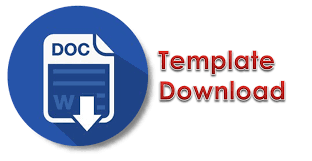An Analysis of Writing Descriptive Text at the Second Semester Students’ English Language Teaching UNU Purwokerto
Abstract
This was a descriptive research project. The goal of this study was to find out how well students could write descriptive texts. The goal is to evaluate the pupils' abilities to write descriptive material. The study looked at five aspects of the students' writing. They're working on formulating ideas, organizing them, using syntax, vocabulary, and mechanics. In addition, there are five categories in which students' writing might be evaluated. Excellent, good, satisfactory, weak, and poor are the four options. The findings of this study concern text composition, the difficulty of performing well-organized writing, the processing of writing order, and language selection. They write the words that aren't appropriate. They use words that are inappropriate for the circumstance. It's all about the grammar here. The kids were grammatically correct. That is the present tense in its simplest form. The students can also put mechanics together well. In their writing, they are things like punctuation, spelling, and capitalization. It occurred as a result of the students' own lack of effort. The kids are aware of the rules of writing, but they are unable to apply them. As a result, the students' writing skills are still lacking.
References
Barta, Eva. (2010). Test Taker Listening Comprehension Sub-Skills and Strategies, WoPaLP Vol. 4, 2010.
Brown, C. A. (2017). Understanding the Out-of-class English Learning Choices of Students in Taiwan. ASIAN TEFL, 2(1), 2017
Cendra, Anastasia Nelladia. (2017). BBC Radio Drama Series Cabin Pressure: Abu Dhabi for Giving Listening Exposure to Students: A View from Humour Perspective. Indonesian Journal of EFL and Linguistics, 2(2), 2017
Darmi, R., Behak, F.P., and Mohamed, Y. (2016). Diversifying Tasks in the English Language
Classroom. ASIAN TEFL, 1(1), 2016 http://dx.doi.org/10.21462/asiantefl.v1i1.2
Du-Babcock, Bertha. (2016). Assessing the Effects of Short-Term Culture and Language Immersion Program: A Hong Kong Case. ASIAN TEFL, 1(2), 2016
El Meysarah, Cintya. (2015). Listening of news through cornell note-taking system in a univeristy critical listening class. RETAIN, 3(1), 2015.
Hanafi, H. (2016). The Effect of Discovery Learning Method Application on Increasing Students’ Listening Outcome and Social Attitude. Dinamika Ilmu, 16(2), 2016
Khotari, C. R. (2004). Research Methodology: Methods and Techniques, Ed. 2, New Dehli: New Age International Publishers
Nation, I.S.P. & Newton, Jonathan. (2009). Teaching ESL/EFL Listening and Speaking. New York: Routledge, Taylor and Francis
Husna, L., Zainil, & Rozimela, Y. (2013). No Title. 1(2), 1–16.
Asrial, R., & Asty, H. (2010). Teaching Writing Descriptive Text by Combining Brainstorming and Y Chart Strategies at Junior High School. 1–8.
Maghfuroh, & Nugroho, H. A. (2015). Developing Descriptive Writing Skill By Using Small Group Discussion For Tenth Graders. 1–6.
Copyright (c) 2021 Meilina Haris, Dinar, Ade

This work is licensed under a Creative Commons Attribution 4.0 International License.







